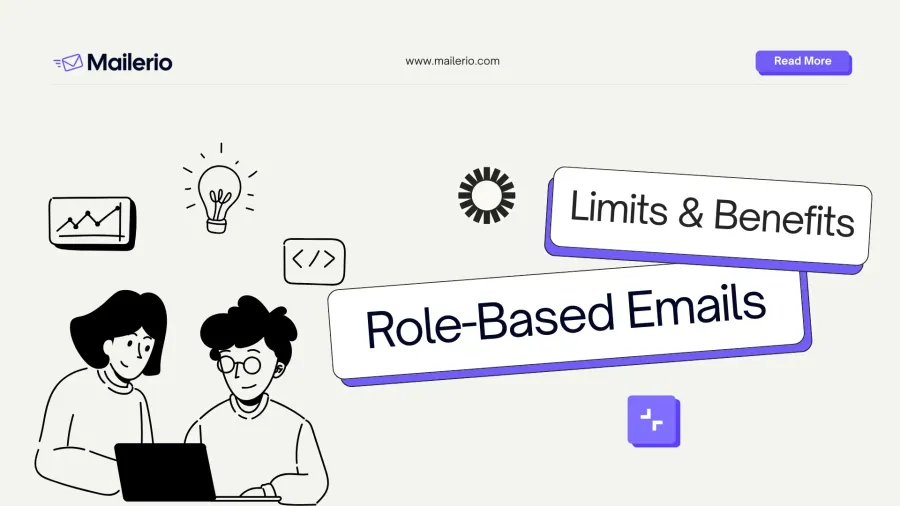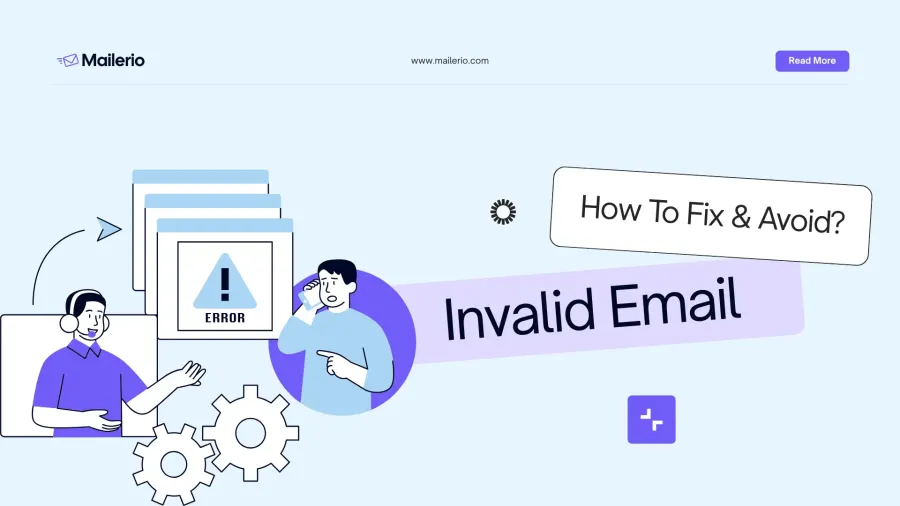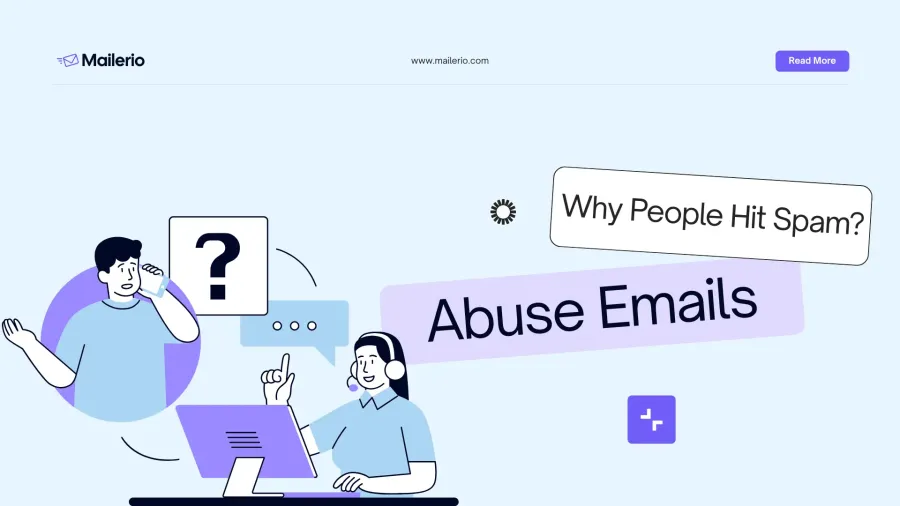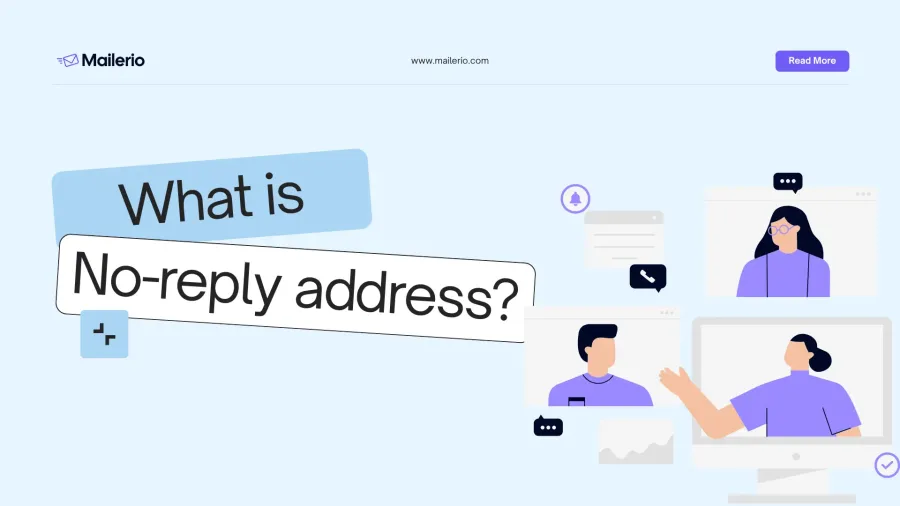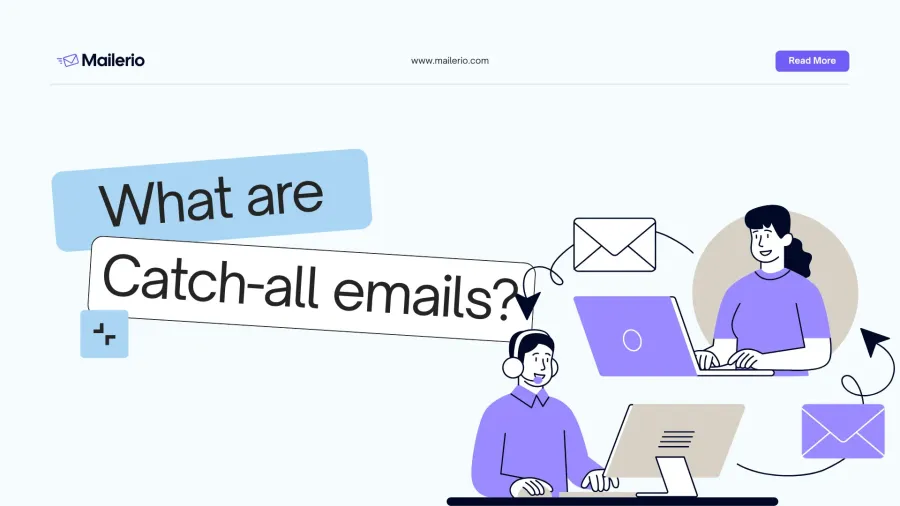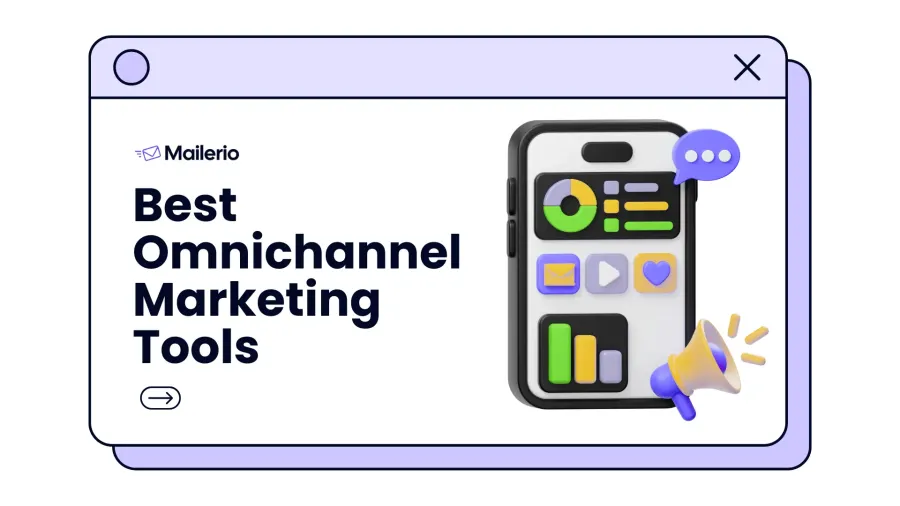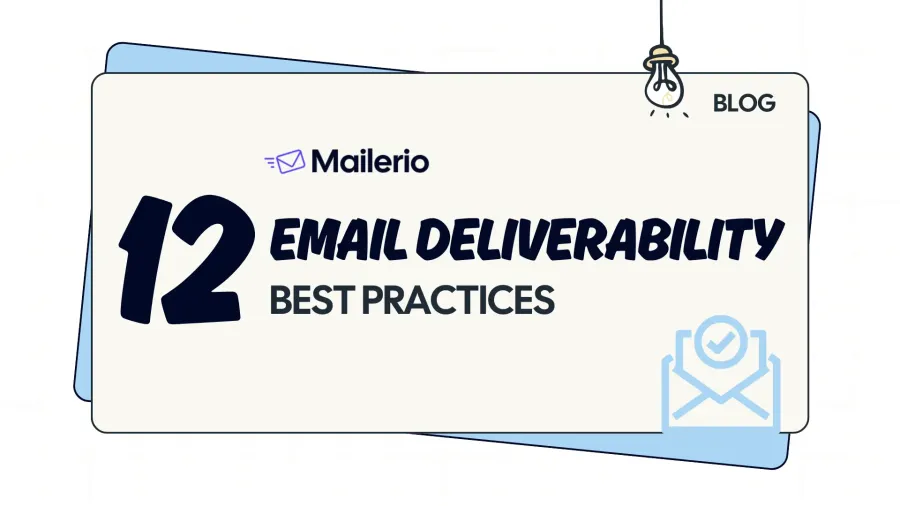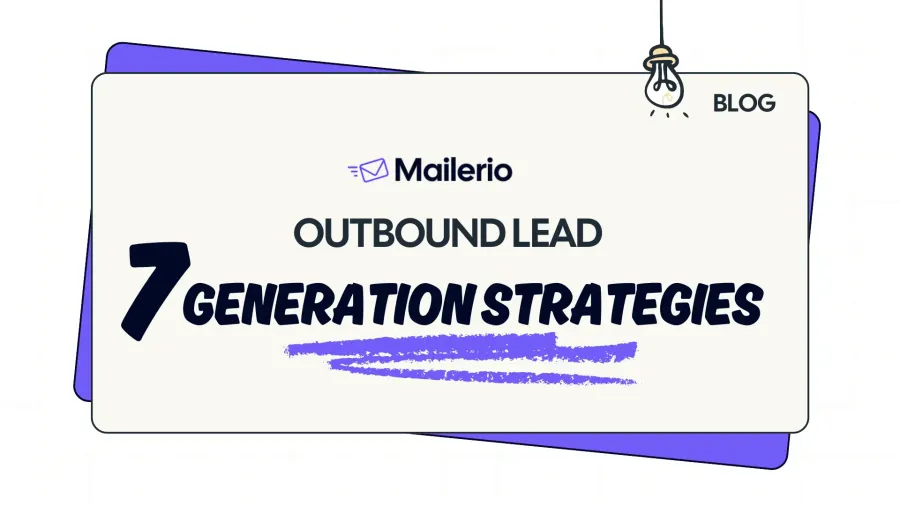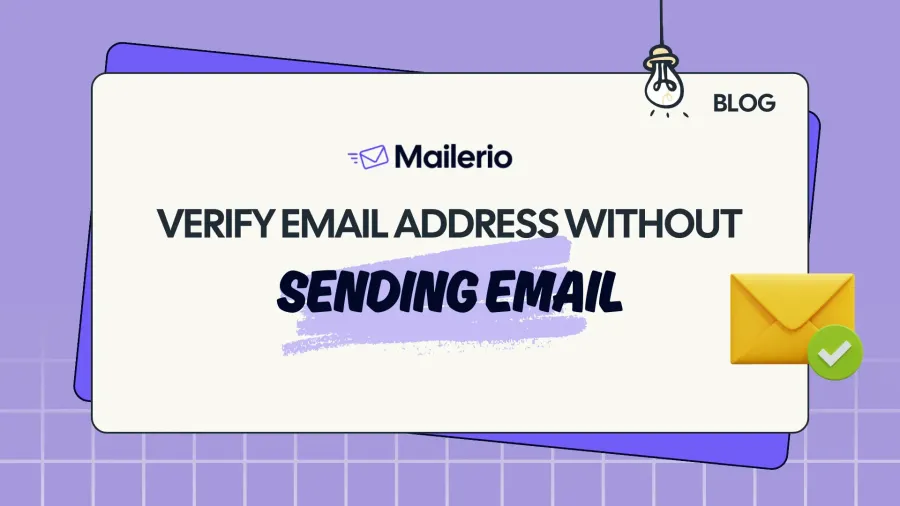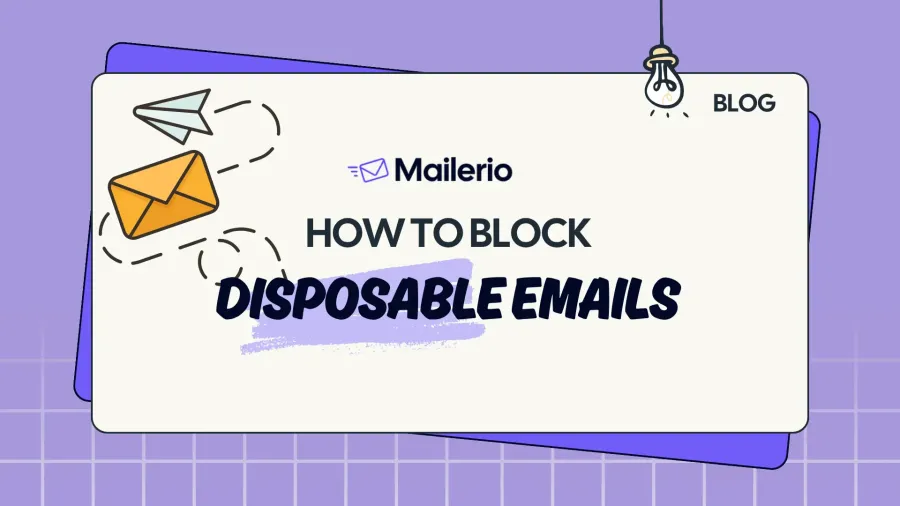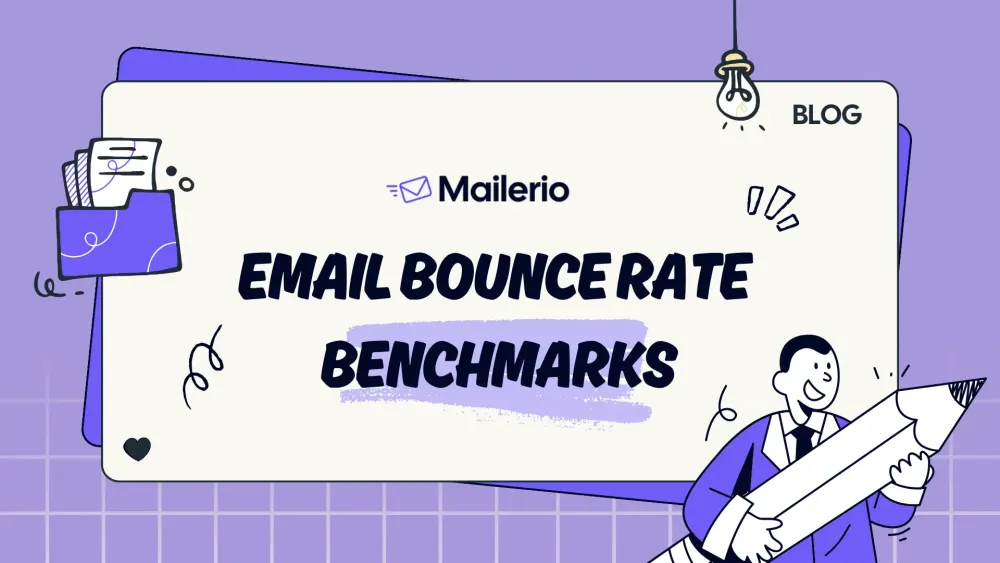
Is your email bounce rate higher than it should be in 2025? Find out how your email bounce rate benchmark stack up against the latest industry benchmarks and get practical tips for reducing bounces, improving deliverability, and protecting your sender reputation.
Why Email Bounce Rate Still Matters in 2025
Even as inbox algorithms and marketing platforms evolve, email bounce rate remains a key indicator of your campaign’s health. Especially after recent updates from major email providers like Gmail and Yahoo, which have increased their security standards, senders need to be very careful to protect their sender reputation.
Google outlines the importance of monitoring bounced messages. In their latest documentation, they state: “If messages start bouncing or start being deferred, reduce the sending volume until the SMTP error rate decreases.” This means senders should validate their email lists before sending to avoid high bounce rates and prevent penalties from major email providers.
A high bounce rate is more than a technical glitch it can damage your domain reputation, reduce inbox placement, and signal list quality issues. That’s why knowing the average bounce rates in your industry is so important. These benchmarks give you a performance baseline and help pinpoint when it’s time to optimize.
Email Bounce Rate Benchmarks in 2025: What’s Considered Normal?
One of the biggest marketing email providers Mailchimp analyzed billions of emails to reveal bounce rate benchmarks. Based on updated data an average inudstry hard bounce rate is 0.21% and soft bounce rate 0.70%. Here’s a look at soft, hard, and average bounce rates across industries:
| Industry | Soft bounce | Hard bounce | Average Bounce Rate |
|---|---|---|---|
| Agriculture and Food Services | 0.19% | 0.64% | 0.42% |
| Architecture And Construction | 0.54% | 1.54% | 1.04% |
| Arts and Artists | 0.20% | 0.69% | 0.45% |
| Beauty and Personal Care | 0.14% | 0.69% | 0.42% |
| Business and Finance | 0.26% | 0.70% | 0.48% |
| Computers and Electronics | 0.34% | 1.06% | 0.70% |
| Consulting | 0.38% | 1.13% | 0.76% |
| Creative Services/Agency | 0.44% | 1.24% | 0.84% |
| Daily Deals/E-Coupons | 0.06% | 0.28% | 0.17% |
| Ecommerce | 0.12% | 0.45% | 0.29% |
| Education and Training | 0.23% | 0.80% | 0.52% |
| Medical, Dental, and Healthcare | 0.33% | 0.93% | 0.63% |
| Mobile | 0.29% | 0.88% | 0.59% |
| Music and Musicians | 0.18% | 0.68% | 0.43% |
| Non-profit | 0.21% | 0.69% | 0.45% |
| Photo and Video | 0.35% | 0.99% | 0.67% |
| Politics | 0.20% | 0.60% | 0.40% |
| Professional Services | 0.39% | 1.11% | 0.75% |
| Public Relations | 0.33% | 0.93% | 0.63% |
| Real Estate | 0.26% | 0.71% | 0.49% |
| Recruitment and Staffing | 0.31% | 0.88% | 0.60% |
| Religion | 0.08% | 0.33% | 0.21% |
| Restaurant and Venue | 0.17% | 0.57% | 0.37% |
| Retail | 0.14% | 0.48% | 0.31% |
| Social Networks and Online Communities | 0.15% | 0.51% | 0.33% |
| Software and Web App | 0.49% | 1.37% | 0.93% |
| Sports | 0.15% | 0.52% | 0.34% |
| Telecommunications | 0.50% | 1.31% | 0.91% |
| Travel and Transportation | 0.24% | 0.78% | 0.51% |
| Vitamin Supplements | 0.15% | 0.52% | 0.34% |
Quick Insight: E-commerce and nonprofits continue to perform well thanks to frequent list validation and strong user engagement. Industries like marketing, real estate, and education experience higher bounces due to large databases and inconsistent list hygiene. It’s surprising to see that daily deals & coupons have the lowest bounce rate with only 0.17%.
If we look at the data we can see that software & web app have the most highest bounce rate across all industries.
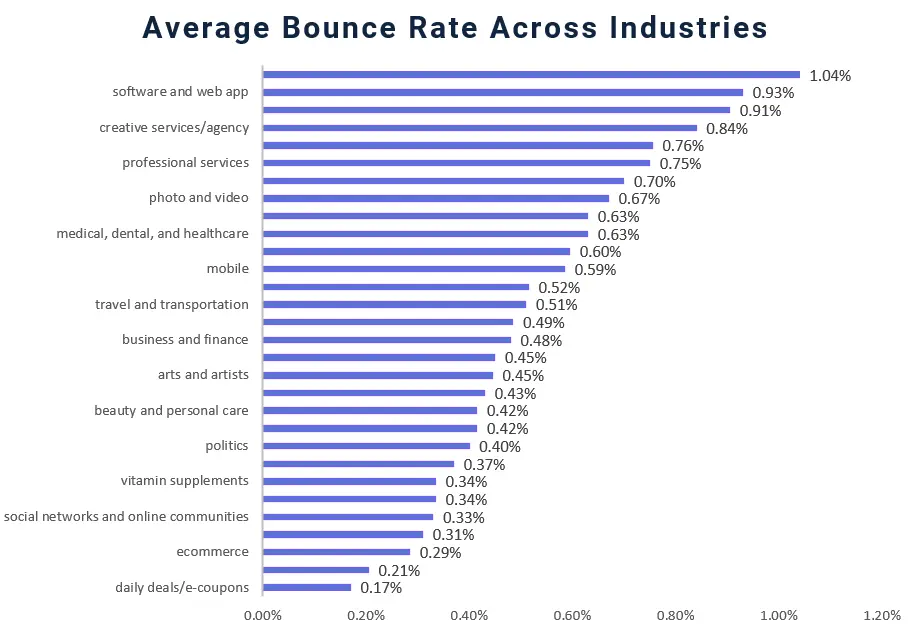
Why Software and Web App Companies Struggle with High Bounce Rates – From Founder Agnese
Software and web app companies have the highest average email bounce rate at 1.04%, which is noticeably above the other industries. Here’s a comment from Agnese Jaunosane co-founder of Ajelix & Mailerio on what could potentially cause this:
As someone who’s been deep in the SaaS and tech space, I’ve seen firsthand why software and web app companies often top the charts for email bounce rates. Here’s what’s really going on:
High Lead Volume, But Not Always High-Quality
We love our demos, free trials, and gated content, but let’s be honest: those lead magnets can attract a lot of junk. It’s not uncommon to see disposable or fake email addresses slipping into our lists. And with low-friction sign-up forms, even a small typo can lead to a hard bounce later.
Fast-Moving Industry = Fast List Decay
In tech, people switch roles frequently. That means their work email might stop working overnight. If we’re not regularly cleaning our lists, we’re hitting dead ends and racking up bounces without realizing it.
Skipping Double Opt-In (I’ve Been Guilty Too)
I get it, we want growth fast. But skipping double opt-in to reduce friction can come back to bite us. It opens the door for invalid or disinterested signups that hurt deliverability in the long run.
Cold Outreach and Automation Overload
A lot of SaaS teams rely on cold outreach tools or scraped email lists. If we’re not verifying those emails first, bounce rates can skyrocket. Automation is powerful, but only if we do it responsibly.
Rapid Growth Without Proper Warmup
Startups love to scale fast, but blasting thousands of emails from a fresh domain? That’s a recipe for trouble. Without warming up IPs and domains, inbox providers won’t trust us and our emails might never land.
If you’re in the same space, here’s what I always recommend:
- Verify every email at signup
- Clean your list regularly, quarterly at minimum
- Warm up your domain gradually if you’re new to sending
- Don’t skip double opt-in. It’s worth it.
What Impacts Bounce Rate in 2025?
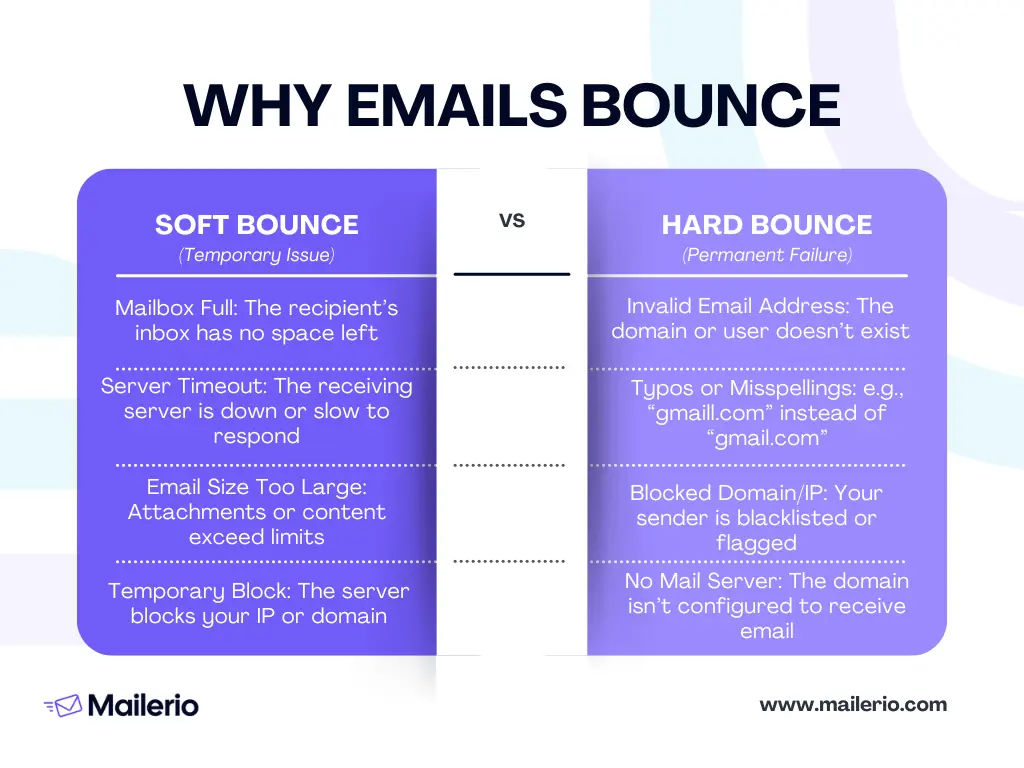
Bounce rate issues don’t arise randomly. Here are the top contributors this year:
1. Poor Email List Hygiene
Old, incorrect, or fake email addresses lead to hard bounces – emails that are permanently undeliverable. Regular list cleaning is non-negotiable.
Email list hygiene is one of the most important factors in keeping your bounce rate low. Outdated, mistyped, or fake email addresses can quickly inflate your bounce rate and harm your sender reputation. Once that reputation drops, inbox providers start flagging your emails even the legitimate ones.
To prevent this, your list needs regular maintenance. I recommend cleaning it at least once a quarter, and more often if you’re sending high volumes or collecting addresses from ads or cold outreach. Using an email verification tool is essential. It helps catch invalid or risky addresses before they become a problem.
If someone hasn’t engaged in a long time or looks suspicious, remove them. It’s better to have a smaller, healthy list than a large one filled with dead ends. A clean list leads to better deliverability, better engagement, and ultimately better results.
2. Sender Reputation Decline
Internet service providers (ISPs) monitor your sending habits. A high bounce rate can harm your reputation and cause even valid emails to get filtered out. If they see a high bounce rate, they start to question your credibility even if the rest of your emails are legit.
Once your sender reputation takes a hit, your emails are more likely to land in spam or get blocked altogether. That means fewer people see your message, and your entire campaign performance suffers. Protecting your reputation starts with keeping your list clean, sending consistently, and staying on top of bounce trends. It’s one of those behind-the-scenes metrics that quietly shapes everything.
3. Content Quality and Frequency
Irrelevant messaging or high-frequency sends often trigger soft bounces (temporary failures), particularly if inboxes are full or servers temporarily reject your messages. What you send and how often directly affects your bounce rate. If your emails aren’t relevant or you’re sending too frequently, you’re more likely to trigger soft bounces. These happen when a mailbox is full or the server temporarily rejects your email.
I’ve seen this especially with overly aggressive campaigns. It’s not just about avoiding unsubscribes poor timing and irrelevant content can keep your emails from being delivered at all. Find a rhythm that fits your audience, and make every message worth opening.
4. Domain & IP Trustworthiness
Domains and IPs with a history of spam or poor engagement are penalized. Warming up new domains is more important than ever. Your domain and IP have a track record and inbox providers are watching.
If there’s a history of spam, high bounce rates, or low engagement tied to your domain, your emails are more likely to get flagged or blocked. That’s why warming up a new domain is essential. Don’t just launch a campaign from a fresh sender address without building trust first. Start small, send consistently, and gradually increase your volume. Reputation takes time to earn and just one bad campaign to lose.
5. Engagement Metrics
Low opens, minimal clicks, or too many unsubscribes might not seem like bounce triggers but they quietly shape how inbox providers treat your emails. When engagement drops, ISPs assume your content isn’t wanted. As a result, your emails get deprioritized or land in spam. That lower placement means even valid addresses are more likely to bounce. Keep an eye on engagement signals. They’re not just about performance they’re about deliverability.
How to Benchmark Your Bounce Rate
So how do you know where you stand?
- < 1%: Excellent – Your list is clean, your reputation is strong.
- 1% – 2%: Acceptable, but Optimizable – Could benefit from better validation.
- > 2%: High Risk – Take immediate action to avoid further deliverability issues.
How to Reduce Email Bounce Rate
Reducing bounce rate isn’t just a technical fix it’s one of the most powerful ways to improve your email performance and protect your sender reputation. Here’s what I focus on:
1. Use Real-Time Email Verification
I never let unverified emails into my list. Using an API verification at sign-up or import helps catch typos, fakes, and throwaway addresses before they cause damage.
2. Warm Up New Domains & IPs
If you’re launching a new domain, don’t rush it. I always start with low volume and gradually scale over a few weeks to build trust with inbox providers.
3. Clean Your List Regularly
Remove hard bounces, duplicates, inactive users, and temporary addresses at least once per quarter. List decay is real. I clean our database every quarter removing bounces, duplicates, and inactive addresses to keep our deliverability high.
4. Optimize Send Frequency
Sending too often or too rarely can result in disengagement and increased bounces. Test your cadence and monitor engagement. Too much email and people disengage. Too little and they forget who you are. I test send times and pacing regularly, based on real engagement data.
5. Implement Double Opt-In
Require new subscribers to confirm their email via a unique link. This prevents fake signups and boosts list quality. It might add one extra step, but double opt-in keeps fake signups off the list and ensures people actually want to hear from you.
6. Improve Email Content
Content matters. I avoid spammy words and focus on clear, relevant messaging that connects with the audience—and stays on the safe side of spam filters. Avoid spam triggers like “FREE!!!” or “Click NOW.” Use personalized, relevant content that resonates with your audience and passes ISP filters.
7. Monitor Your Sender Score
Your sender score is like a credit score for email. I check it regularly and keep an eye on blacklists to stay ahead of deliverability issues. Check your domain’s reputation using tools like Sender Score or MXToolbox. Stay off blacklists.
Conclusions
So, how does your email bounce back stack up against the benchmark? If you follow the tips above, you’ll keep your bounce rate in check and your emails landing where they matter most in your customers’ inboxes.
Remember, a bounce isn’t just a number. It’s a signal. A chance to clean up your list, tighten your strategy, and get better results. When you refuse to accept a high bounce rate, you’re building a stronger, healthier list and that’s the foundation for better deliverability and real connections with your prospects.
Not sure where to begin? Get started with Mailerio sign up for free and get 1,200 email verifications every year. And if you hit a snag, our team’s here for you. Because growing your list shouldn’t wait.

